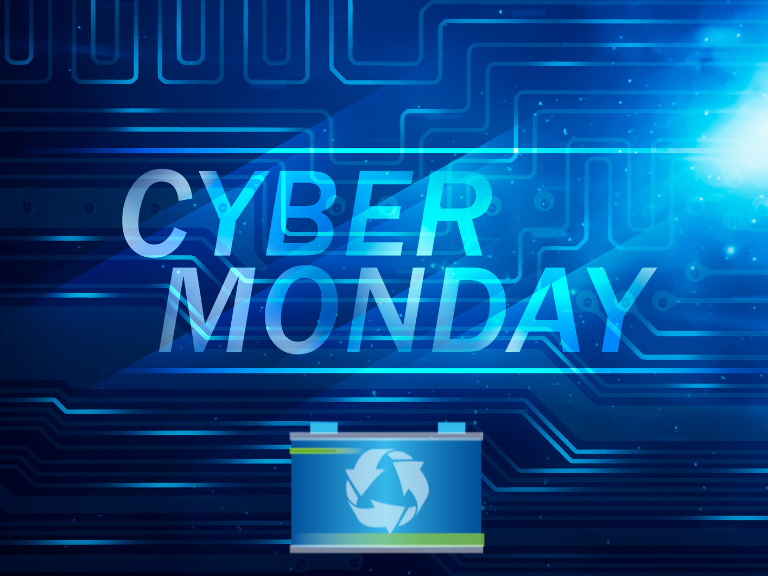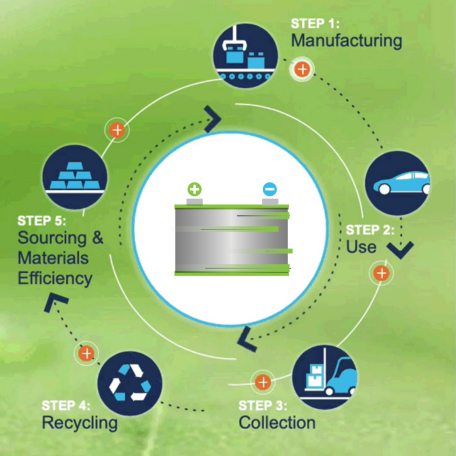
Let’s Unwrap Lead Batteries’ Vital Role in the $12 Billion Shopping Frenzy
The Monday following Thanksgiving Day isn’t just a calendar marker for the December holidays; it’s the gateway to Cyber Monday, a 24-hour online shopping extravaganza that saw nearly $12 billion in transactions last year. This festive season, lead batteries will again be pivotal in delivering goods (and happy memories) to online shoppers.
The Gift of Lead Batteries, From Order Placement Through Delivery
Despite inflationary concerns, online shoppers won’t slow their scroll this year. Deloitte predicts a 10.3% to 12.8% rise in online sales, promising a surge of packages from retailers to consumers. Have no fear. The lead battery industry is prepared.
The role of lead batteries begins long before customers actually retrieve their packages from front porches and package lockers. Behind the scenes, here’s how lead batteries ensure the entire process, from manufacturing goods through their doorstep delivery, unfolds without a hitch:
Manufacturers Increasingly, manufacturers are transitioning to renewable energy to more sustainably power the facilities and processes that create saleable goods. Lead batteries provide the essential energy storage needed for companies to harness the benefits of renewable energy sources, like wind and solar.
Data Centers At point of sale, lead batteries provide the backup power – also known as uninterruptable power supply (UPS) – to our vast, digital society. That includes the massive data centers that manage billions of dollars of financial transactions. Data centers rely on lead batteries to ensure there’s zero downtime during peak shopping hours.
Logistical Networks Post sale, lead batteries continue their crucial role. They help the global marketplace manage the complex logistical networks required to deliver packages on time.
Material Handling It’s no small feat delivering billions of packages to eager consumers. Lead batteries help power the multimodal transportation system required.

In fact, approximately 90% of material handling equipment, from freight trains to electric forklifts, relies on advanced lead batteries to keep the wheels turning and the economy moving forward. And, lead batteries help keep aircraft and locomotives running smoothly, powering signal lights and crossing barriers for safety.
Consider these facts on lead batteries and material handling:
- Forklifts: Lead batteries power the millions of electric forklifts and industrial trucks racing around warehouses and distribution centers, ensuring packages reach consumers with unprecedented accuracy and speed.
- Ships: Lead batteries propel ships carrying goods from overseas markets to our shores, supporting the movement of shipping containers and goods to distribution centers.
- Tractor-Trailers: Heavy-duty tractor-trailers, the backbone of U.S. freight transportation, kick into gear with a lead battery, while also providing power to enhance drivers’ road life.
- Delivery Vehicles: Whether it’s delivery trucks or personal vehicles, lead batteries are a driving force in the last step – getting goods to their new homes. Almost 290 million vehicles in the U.S., including most electric vehicles and hybrids, rely on lead batteries for essential functions.
Resilient, Reliable Lead Batteries Year-Round
Holiday shopping is prime time for consumers to experience supply chain disruptions and shortages. Not so with lead batteries. The lead battery industry is a model for sustainability and circularity. It has a strong domestic supply chain, with a robust North American network for lead battery manufacturing, collecting, recycling (lead batteries have a remarkable 99% recycling rate in the U.S.), and remanufacturing. This ensures a resilient and reliable domestic supply chain.

Put Lead Batteries on Your “Nice” List
This Cyber Monday, we hope you’ll spare a good thought for sustainable lead batteries. These silent heroes work tirelessly to guarantee your festive purchases reach you without a hitch, making your online shopping experience merry, from start to finish.







